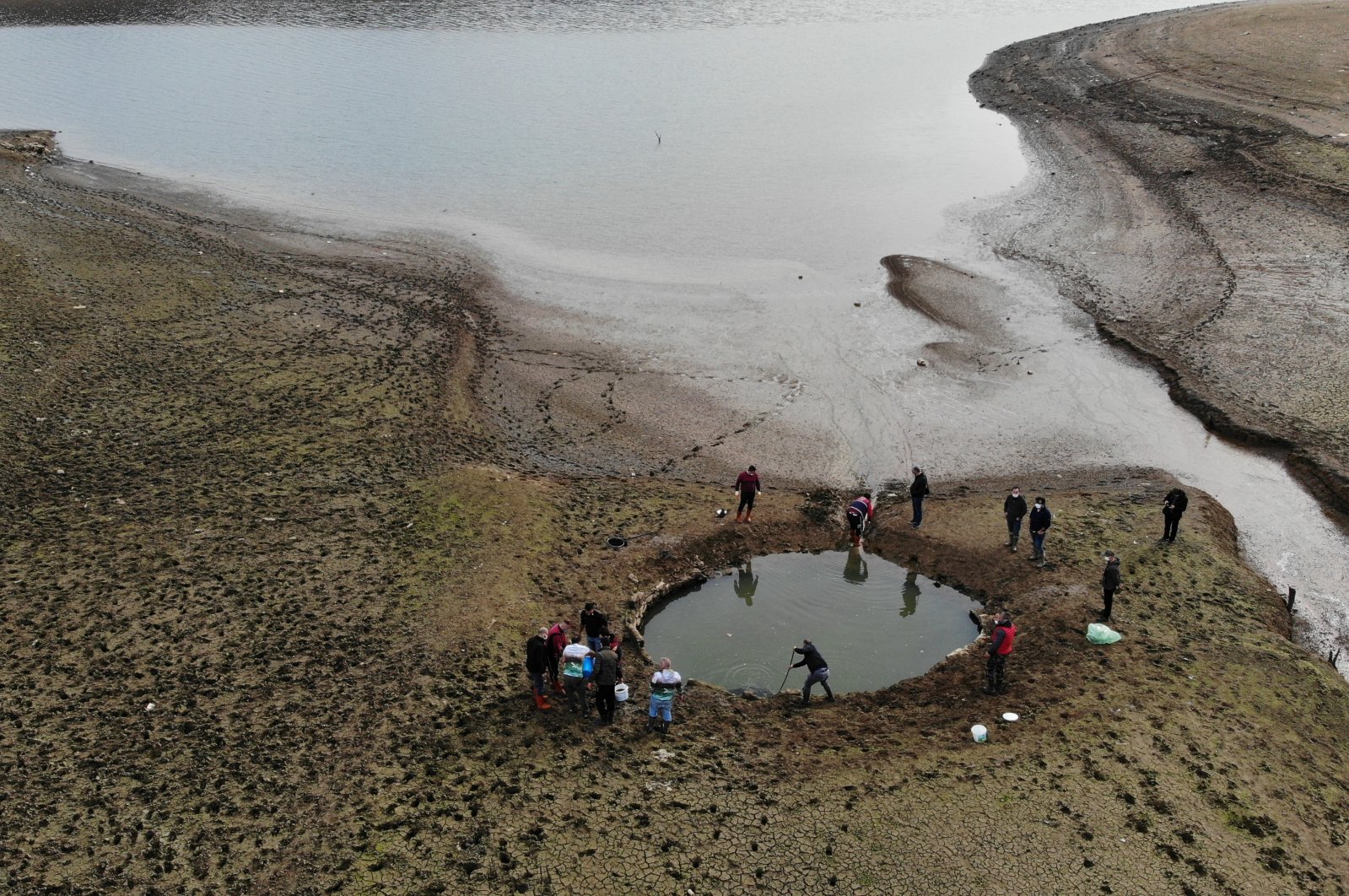Water drama continues for Istanbul as dam supplies drop to critical levels

The seas on either side of Istanbul might be the only water the city will be able to see in the near future as water levels in dams supplying the main grid are now facing a grave risk. Rainfall is nowhere near the levels of previous years, let alone snowfall. This lack of precipitation in January spells trouble for dams whose average water levels decreased to 19.79% as of Monday, the lowest in the past 15 years.
Data by the Istanbul Water and Sewerage Administration (ISKI) shows water levels fluctuating below 30%. Sazlıdere has the lowest level at 5.33% while Darlık dam has the highest level at 46.46%. Others are middling between 21% to 29%.
Dams and ponds catering to the water needs of more than 15 million people in the city have a capacity of accumulating 868.6 million cubic meters (30.67 million cubic feet) of water, and currently, the accumulated water is somewhere around 166 million cubic meters. It is at a dangerous level for a city where an average of 2.8 million cubic meters of water is consumed daily in winter.
Water scarcity forces the transmission of water from far-flung sources. In 2020, the city’s water supplies largely relied on Yeşilçay and Melen, two rivers east of Istanbul. Though authorities assuage concerns for any disruption to the water grid, data from past years indicates an imminent crisis. On Jan. 4, 2020, for instance, the water level in the dams was at 39.02% and on the same date in 2019, it was 83.25%.
The absence of precipitation that triggers water woes for Istanbul is mainly blamed on climate change that hit inland bodies of water across the country last year. But an expert said that climate change only worsens the existing problem: the higher demand for water associated with a rising population. Istanbul, a financial and commercial hub that has been a center of attraction for millions throughout its history, has a perpetual upward trend in population increase.
[embedded content]
Professor Mikdat Kadıoğlu, a meteorology expert from Istanbul Technical University (ITÜ), said the climate has dramatically changed in the past and temperature changes will worsen in the future, but Istanbul faces a chronic problem of water shortages. Speaking at an event in the city on Sunday, Kadıoğlu said Istanbul accumulates water both from its own dams and from rivers stretching as far as the northwestern tip of the country to meet the demands of the population. “If it had a population corresponding to the volume of the water it used, Istanbul would not have a water problem,” he said.
Istanbul Mayor Ekrem Imamoğlu said last month the city is not currently facing a water shortage problem but warned about the coming months. “The risk is here. We have to be careful and save water,” he told reporters at a news conference on Dec. 24. “Istanbul went through a dry 2019 and 2020. In terms of precipitation, we have seen less rainfall, snowfall compared to previous years. We see a drought risk in 2021 and we are still four years away from the Melen Project,” he said, referring to a large-scale dam project to address the water needs of the city via a water pipeline from the eponymous river.
“We are still able to bring water from Melen and other resources and discussing whether to open new water wells. The European side of the city is under greater risk but water transmission (from outside the city) eliminates water shortage risk even if the next seasons are as dry as these past two years. We believe the problem will be over once the Melen Project is completed. There is no emergency, but the risk lingers, so I call the citizens to be more cautious while using water, not to use it in excessive amounts,” he said.
Saving water is at least a temporary solution, but experts say the city’s water supply pipelines themselves are failing at this point due to huge leakages.
Almost 22.3% of the water supplied to Istanbul from various sources does not even reach the grid due to leaks, Medet Güney, the board secretary of the Istanbul branch of the Chamber of Environmental Engineers (ÇMO), told Demirören News Agency (DHA) on Dec. 22. A study conducted by the professional body showed that some 236.9 million cubic meters of water out of a total of 1.6 billion cubic meters is wasted due to leaks in the 22,000-kilometer (13,670 miles) pipeline network that provides water to the city from springs, rivers and dams.
Though alarming, the threat of drought is not exclusive to Istanbul as other cities report decreasing water levels in dams, from Edirne in the northwest to Izmir in the west. The government drafted an action plan which is expected to come into force this year. The plan aims to introduce measures to increase the efficient use of water and curb the decline in water resources in underground dams. Around 150 dams will be built in line with the plan to prevent the vaporization of underground water. Dams will be built where water preservation is needed, and each is expected to cost up to TL 10 million (around $1.2 million). The municipalities will be supported in their infrastructure projects to replace old water pipes which cause wastage of water. The plan also includes a public awareness campaign to encourage more efficient use of water for daily needs like bathing.
